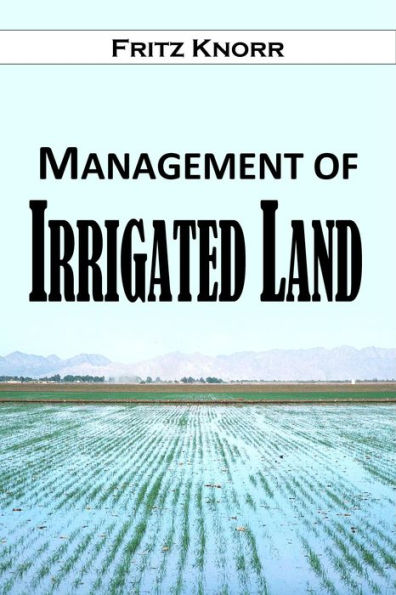It is the ambition of most farmers to produce the largest possible yields of which the land is capable, provided that the cost of production allows a sufficient income to warrant the extra labor required to produce the larger yield. In the humid areas the increased yield is accomplished to a large extent by the use of manure and such other methods as will encourage plant growth. On the irrigated lands, many are trying to force increased yields by the increased use of water, rather than by other means.
Fritz Knorr, Superintendent, of Office of Western Irrigation Agriculture in 1915 wrote a 24-page guide "Management of Irrigated Land" in which he uses scientific research to examine the proper management of irrigation methods to effectively increase yields.
Knorr notes that water can never be made to take the place of soil fertility or cultivation. It appears from observation that to a certain point fertility may replace water. In other words, the more fertile soils utilize moisture more efficiently, with the proper treatment.
In his useful guide, among the conclusions Knorr makes are:
Seepage may be prevented to some extent by employing proper methods of irrigation. Overirrigation may have a tendency to water-log the soil.
A small head of water, properly used, will irrigate more land and do better work than a large head gone over the land hurriedly.
The distance of irrigation ditches should be such that the water may travel between the ditches in about two hours.
If land can be irrigated in the fall with the same care that crops are irrigated in the summer, there is an advantage to fall irrigation. If water cannot be properly cared for and this irrigation is uneven, it is a detriment rather than a benefit to the land.
It is a disadvantage to ditch the potatoes as deep on the lighter soils as on the heavier soils.
With the exception of the first crop it is best to irrigate alfalfa after the hay is cut. Irrigation of the stubble is more easily and more evenly done than the standing crop. The hay will cure more quickly on the dry soil than on previously irrigated soil.
There is no material difference in the yields in sugar beets where the soil is plowed from 4 to 20 inches deep. This may be due to the fact that the soil is of a sandier nature. The plowing under of a second and third crop of alfalfa has not produced as large tonnage of sugar beets as the second and third crops that were plowed under.
Working with University of Nebraska, Agricultural Experiment Station of Nebraska, Knorr provides multiple charts showing relative increases in productivity for various crops due to irrigation methods.
Contents:
SUMMARY.
INTRODUCTION.
SEEPAGE.
IRRIGATION.
IRRIGATION HEAD.
STORING WATER IN THE SOIL.
DISTANCE APART OF IRRIGATION DITCHES.
DUTY OF WATER.
FALL IRRIGATION OF CROPS
Work in 1912.
WORK IN 1913.
IRRIGATING AND CULTIVATING POTATOES.
ALFALFA.
SEEDING ALFALFA.
IRRIGATING ALFALFA.
CUTTING ALFALFA.
SUGAR BEETS. DEPTH OF PLOWING.
PLOWING UNDER ALFALFA FOR SUGAR BEETS.
DISTANCE or SPACING swam BEETS.



